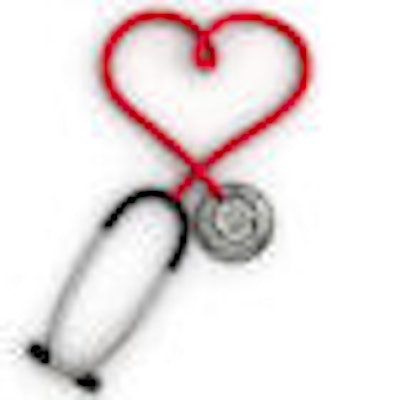
Dental students who provided care for homeless people at a Los Angeles clinic came away with slightly improved attitudes toward the destitute, according to a new study (Journal of Dental Education, November 2010, Vol. 74:11, pp. 1190-1196).
Students had marginally better opinions about whether the homeless are rude and aggressive after they had contact treating them. The largest change (mean change difference = 0.7) was related to students' motivation for entering dental school, saying they felt a stronger desire and greater duty to help the needy after providing care for them.
— Sam Cigno, DDS
"Most studies show that medical and dental students get more cynical and career-oriented as they progress through their training, but we found that our students' attitudes improved not only with these patients but also their responsibility in terms of providing care for the underserved," said lead researcher Mina Habibian, DMD, MS, PhD, a clinical assistant professor at the Herman Ostrow School of Dentistry at the University of Southern California (USC).
"It's a good opportunity for them not only to participate in community service but it's also good experience to provide clinical treatment for underserved patients," Dr. Habibian told DrBicuspid.com.
In a given year, an estimated 3.5 million people experience homelessness, of which 600,000 are parents with 1.35 million children, the study authors noted. Dental care remains one of the top five unmet needs of people who are homeless.
Homeless people are frequently stigmatized as troublesome and undesirable patients, the authors noted.
The mean number of decayed teeth (DT) among homeless people ranges from 2.3 to 5.8, compared with a DT of 0.85 among the general population. Homeless veterans in particular had 3.5 decayed teeth versus 1.1 in the general male population, according to the researchers.
Some surprising findings
Los Angeles has a higher rate of homelessness than most other U.S. cities and counties. On any given day, there are an estimated 68,608 homeless people throughout Los Angeles County. In Los Angeles, the average homeless family has two children. One-half to one-third of homeless people are women and girls. Approximately 15% of homeless people in Los Angeles are children younger than age 18.
Dental students under the supervision of faculty from the USC's dental school spent one day per week for seven weeks at the school's Union Rescue Mission Dental Clinic providing comprehensive dental services to homeless patients, including cleanings, extractions, dentures, and fillings.
Students completed the Attitudes Towards the Homeless Questionnaire (ATHQ) before and after the rotation with an experience evaluation questionnaire at the end. Data were collected from 242 students who completed the questionnaires after working in the clinics between 2006 and 2008, which was part of the school's training program. The score on the ATHQ after rotation increased slightly but statistically significantly (70.36 pretest/71.38 post-test, p = 0.01), which reflected improved attitudes toward the impoverished.
Some 85% of the students agreed that the rotation made them feel more comfortable treating homeless patients, and 98% agreed that the patients made their experience enjoyable.
"It is encouraging to see that student' overall attitudes toward homeless people improved after spending only seven days treating this population. Nonetheless, although the improvement was statistically significant, it was very small," the researchers concluded.
Nearly half the students expected that the rotation would help them acquire speed and improve their dental care delivery skills (44%) or complete dental school requirements (47%), they added.
|
St. Louis dentist cares for homeless teens While providing much-needed care to local homeless teens, St. Louis dentist Sam Cigno, DDS, was struck by the plight of many, including several young people who had pulled out their own teeth in desperation. Dr. Cigno first opened the doors of his general practice to young adults of the Covenant House -- which houses homeless, runaway, and at-risk youth -- last May as part of the national Dentistry From the Heart program. On November 12, he did so again, treating 30 teens to root canals, extractions, fillings, and cleanings. "They were very grateful, and most were normal teenagers, but a couple were bitter and some had really sad stories," he told DrBicuspid.com. One 16-year-old boy had been on the street since he was 12. "He's a nice-looking boy, very articulate," Dr. Cigno recounted. Last summer, suffering from a bad toothache in one of his front teeth, the boy tried to pull it out himself with pliers. "It broke off one-third down the root, so I surgically removed it," Dr. Cigno explained. "In May, I had three young people who had taken their own teeth out. Most never go to the dentist except in crisis. Your heart goes out to these kids." One girl was anesthetized so that she could have her caries treated. But she became so unnerved by the anesthetic that Dr. Cigno couldn't work on her. "It scared her and she wouldn't let us do anything else," he recalled. "We worked on her quite a while, but we weren't able to treat her and had to let her go." Dr. Cigno said he decided to offer care to the teens at Covenant House after being invited to an event at the halfway house last year. "I thought maybe we can help these children out more than other people," he said. "I think it's a great experience for the kids, and it's certainly a wonderful experience for all of us at the office." |
Copyright © 2010 DrBicuspid.com



















